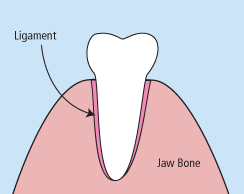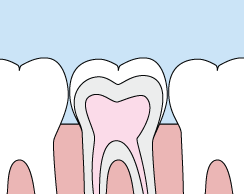Common Procedures
Topics on this page

Regular Exams and Cleanings
Regular preventive care visits are an essential part of maintaining your child’s oral health. During your child's regular exam, we will:
- Check for any problems that may not be seen or felt
- Look for cavities or other signs of tooth decay
- Inspect the teeth and gums for gingivitis and signs of periodontal disease
- Perform a thorough teeth cleaning
Visiting our office every six months gives you the chance to ask the doctor any questions you may have about your child's oral health. Regular exams are offered by appointment only, so please contact our practice today to schedule your child’s next dental exam and teeth cleaning, or book online.
Extractions
 There are times when it is necessary to remove a tooth. Sometimes a baby tooth has misshapen or long roots that prevent it from falling out as it should, and the tooth must be removed to make way for the permanent tooth to erupt.
There are times when it is necessary to remove a tooth. Sometimes a baby tooth has misshapen or long roots that prevent it from falling out as it should, and the tooth must be removed to make way for the permanent tooth to erupt.
At other times, a tooth may have so much decay that it puts the surrounding teeth at risk, or can become damaged as the result of an accident or injury, so the doctor may recommend its removal. Infection, orthodontic correction, or problems with a wisdom tooth may also require removal of a tooth.
Fluoride
 Fluoride is effective in preventing cavities and tooth decay. It also prevents plaque from building up and hardening on the tooth’s surface. A fluoride treatment in our office takes just a few minutes.
Fluoride is effective in preventing cavities and tooth decay. It also prevents plaque from building up and hardening on the tooth’s surface. A fluoride treatment in our office takes just a few minutes.
After the treatment, your child may be asked not to rinse, eat, or drink for at least 30 minutes in order to allow the teeth to absorb the fluoride. Depending on your child’s oral health or the doctor’s recommendation, a fluoride treatment may be required every 3, 6, or 12 months.
Sealants
 Sometimes, brushing is not enough, especially when it comes to those hard-to-reach spots in your child’s mouth. It is difficult for a toothbrush to get between the small cracks and grooves on your child's teeth.
Sometimes, brushing is not enough, especially when it comes to those hard-to-reach spots in your child’s mouth. It is difficult for a toothbrush to get between the small cracks and grooves on your child's teeth.
If left alone, those tiny areas can develop tooth decay. Sealants give your little one’s teeth extra protection against decay and help prevent cavities.
Dental sealants are a plastic resin that bonds and hardens in the deep grooves on the surface of your child’s tooth. When a tooth is sealed, the tiny grooves become smooth and are less likely to harbor plaque. With sealants, brushing your son or daughter’s teeth becomes easier and more effective against tooth decay.
Sealants are typically applied to children’s teeth as a preventive measure against tooth decay after the permanent teeth have erupted. It is more common to seal “permanent” teeth rather than “baby” teeth, but every patient has unique needs, and your little one’s dentist will recommend sealants on a case-by-case basis.
Sealants last from three to five years, but it is fairly common to see adults with sealants still intact from their childhood. A dental sealant only provides protection when it is fully intact, so if your child’s sealants come off, let us know, and schedule an appointment for your child's teeth to be re-sealed.
Dental Restorations
- Composite (filling): A composite is a white filling material used to restore areas of dental decay. Composites are typically not recommended on large areas of decay or on primary teeth that will not fall out for several years in order to avoid re-treatment of the teeth.
- Stainless Steel Crown: A stainless steel crown, or “silver cap,” is a strong restoration that covers the entire tooth and typically lasts until the tooth falls out. Once the decay has been removed from your child’s tooth, the remaining tooth is reshaped to allow the placement of the stainless steel crown. The crown will be placed on the day of treatment and does not require a separate appointment for placement like adult crowns.
- NuSmile Crown: A NuSmile crown is a stainless steel crown with a white, plastic coating adhered to the outside to give the restoration a more natural look. Once the decay has been removed from your child’s tooth, the remaining tooth is reshaped to allow the placement of the NuSmile crown. The crown will be placed on the day of treatment and does not require a separate appointment for placement like adult crowns. NuSmile crowns require special care. See provided “NuSmile Consent” for more details.
- Zirconia Crown: our office is EZPEDO Zirconia Crown certified. Zirconia crowns are a completely white, natural-looking crown that may be placed on any primary tooth. These crowns require a more technique-sensitive tooth preparation, and therefore take more time to place than a stainless steel crown. For this reason, children who require more than 1 Zirconia crown will need to be completely asleep for their treatment. Once the decay has been removed from your little one’s tooth, the remaining tooth is reshaped to allow the placement of the Zirconia crown. The crown will be placed on the day of treatment and does not require a separate appointment for placement, as with adult crowns. In the case that a Zirconia crown does not fit the tooth, a NuSmile crown or stainless steel crown will need to be placed. See the provided “Zirconia Consent” for details.
- Pulpotomy: A pulpotomy is a nerve treatment that is required when decay is very extensive and extends into the nerve of the tooth. Once the nerve is accessed, the top portion of it is removed and replaced with a temporizing medicine. A crown will be placed on the tooth to complete the restoration.
Indirect Pulp Cap: An indirect pulp cap is a nerve treatment used on permanent teeth that have extensive decay. An indirect pulp cap is recommended for large decay on permanent teeth to help postpone root canal therapy. With an indirect pulp cap, the soft part of the decay is removed from the tooth and a layer of medicine is placed over the remaining portion of decay. Depending on the location and severity of the decay, either a composite filling or a stainless steel crown will be placed to complete the restoration. The tooth will still require root canal therapy in the future. - Extraction: An extraction, or removal of the tooth, is required when the extent of decay is so great that the tooth can no longer be restored or the tooth is abscessed (infected). We will send your child’s tooth home with you in a special treasure box so it can be given to the tooth fairy!
- Space Maintainer: A space maintainer may be recommended when your son or daughter has had a back tooth removed and the permanent tooth will still not emerge for several years. The space maintainer will stay in place until the new permanent tooth begins to erupt. At that time, the space maintainer will need to be removed by the dentist to allow the new tooth to grow in properly.












